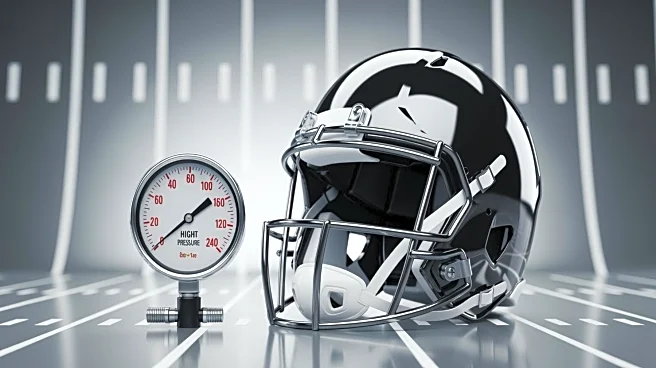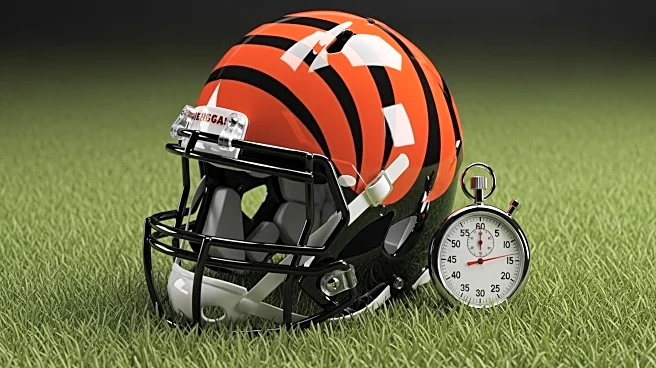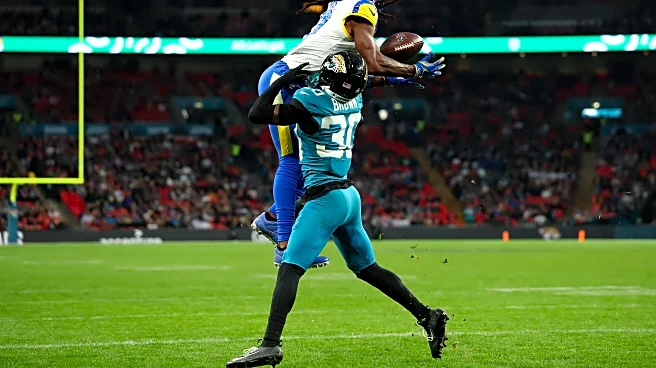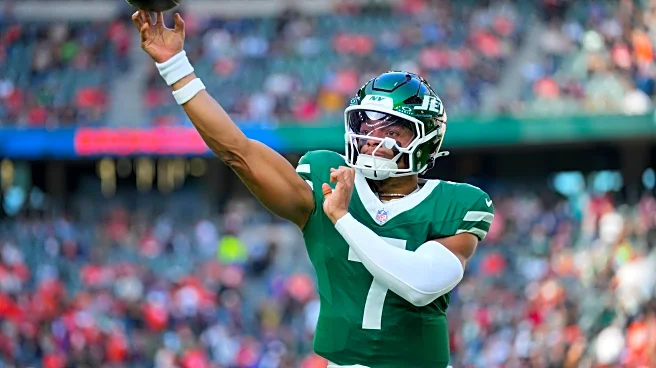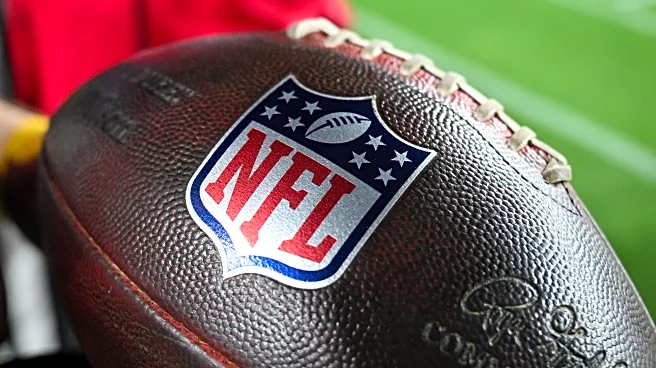What's Happening?
The 2025 NFL Fear Index ranks all 32 teams based on their intimidation factor, which includes team performance, player volatility, and fan environment. The Pittsburgh Steelers are among the top teams,
with a fear rank of 7.6, a pressure rate of 45.5%, and a win rate of 75%. The Steelers' identity is rooted in intimidation, with their defense generating pressure on 45% of dropbacks and logging 36 quarterback hits. The New York Jets, on the other hand, rank lowest with a fear rank of 14, a pressure rate of 14%, and no wins recorded. The index measures fear in football through a composite score that includes defensive pressure rate, win percentage, player stats, arrest history, and local crime rates around stadiums.
Why It's Important?
The Fear Index highlights the psychological aspect of football, where intimidation can be a strategic advantage. Teams like the Steelers use their high pressure rate and win percentage to create a formidable presence on the field, impacting their opponents' performance. This ranking can influence betting strategies and fan engagement, as teams with higher fear scores are perceived as more dominant. The index also sheds light on the role of fan environments and local crime rates in shaping the overall intimidation factor of a team, which can affect attendance and team morale.
What's Next?
As the season progresses, teams will continue to leverage their intimidation factors to gain competitive advantages. The Steelers, with their strong defensive tactics, are likely to maintain their high ranking, while teams like the Jets may need to reassess their strategies to improve their performance and fear factor. Stakeholders such as coaches, players, and fans will be closely monitoring these rankings to adjust their approaches and expectations for upcoming games.
Beyond the Headlines
The Fear Index also raises questions about the ethical implications of using intimidation as a strategy in sports. While it can lead to success on the field, it may also contribute to aggressive behavior and increased player volatility. Additionally, the focus on local crime rates around stadiums highlights broader societal issues that intersect with sports, prompting discussions on community safety and support for local teams.
